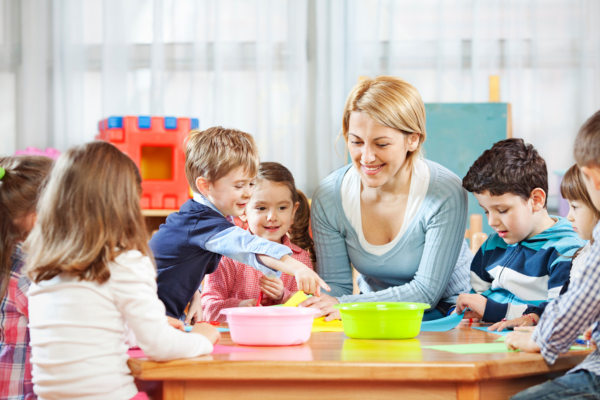
Teaching kids to problem-solve by using real world issues can be incredibly effective if approached with structure to support the intended outcomes. Children’s lives are full of problems that need solving, we just often think of them as just our problems as the adults. By having children participate in the brainstorming, filtering of ideas and implementation, they can take ownership in the solution and learn the process of problem solving with something that’s relevant to them. Here are some examples:
- Some friends would like to use the new easel but they haven’t had a chance
- Multiple friends would like to sit next to Ms. Susan when she’s reading a story
- The sand from the sensory table keeps getting into the coach cushions
We’ve previously reviewed the first two steps in this problem-solving exercise. To recap:
Step 1: Facilitate a brainstorming session by 1) welcoming all ideas, 2) setting a time limit and 3) making sure everyone gets a chance
Step 2: Collectively evaluate the solutions to implement using three questions: 1) Is the idea effective? 2) Is the idea practical? 3) Is the idea respectful to people and property?
Once you have narrowed down your list of possible solutions to those that pass the three thresholds, the group can choose which to start with by vote, random drawing, or ask the kids to come up with a fair way to decide. The more they’re involved in the process, the more they’ll learn about collaborative decision-making including managing the big feelings that will come up when their idea isn’t picked.
And now for step 3, how to implement your chosen solution and move through the process of solving the problem.
- Come up with a plan of action, a timeline for implementing the steps, and a way to measure progress and success. Many great ideas don’t work simply because people couldn’t move them from the idea stage to the action stage.
- Use visual aids of the steps to be taken, the order, the timetable so kids can follow along easily. Working through the process, not the specific plan of action, is where the core learning takes place.
- Remember that your problem may not be solved on your first attempt. Think of that as a teachable moment, not a failure. Go back to the idea and brainstorm ways to tweak it to make it more effective. Remember to evaluate the updated idea using the three thresholds to make sure it’s still workable. Then update the plan of action to reflect the new and improved idea.
Now that kids know the problem-solving process, they can circle through the process until they find a workable solution to whatever problem they’re facing. That’s the valuable thing about teaching the foundational life skill of effective problem solving, kids can apply the process to any challenge, big or small, they’re facing.